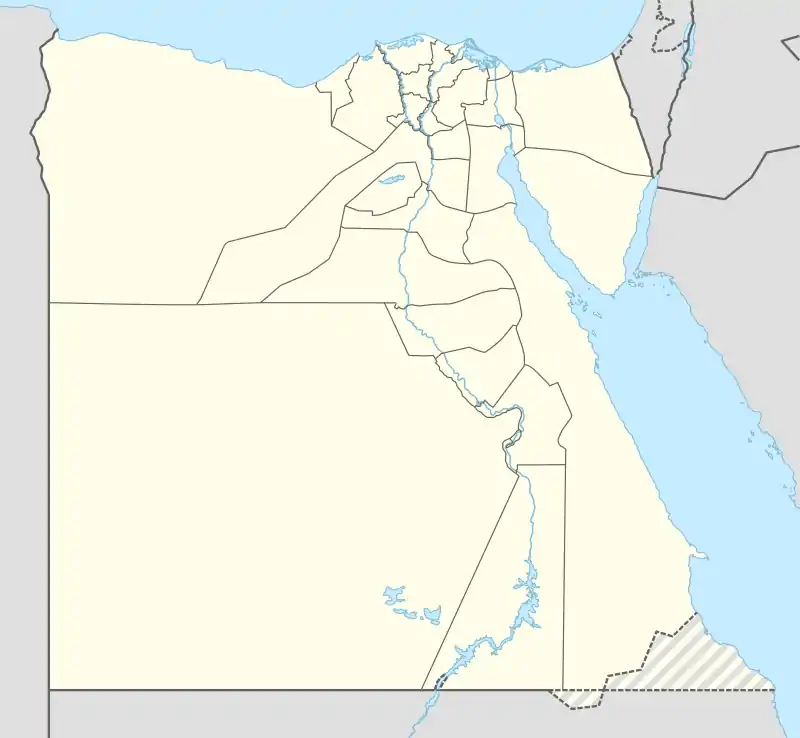| Wadi El Gemal National Park | |
|---|---|
 A Red Sea beach at Wadi el Gemal | |
 Location in Egypt | |
| Coordinates | 24°21′08″N 35°02′55″E / 24.352101°N 35.048675°E |
| Area | 4,770 km2 (1,840 sq mi) |
| Established | 2003 |
Wadi El Gemal National Park is a national park in Egypt. It is 7,450 square kilometres (2,880 sq mi) in size, including 4,770 square kilometres (1,840 sq mi) of land and 2,100 square kilometres (810 sq mi) of marine space.[1]
The coastal area boasts rich coral reefs featuring 450 species of coral, plentiful cnidarians, giant clams, sponges, crustaceans and more. Additionally, there are over 1200 species of fish, including the Blue-spotted fantail ray, emperor angelfish, giant moray, parrotfish, redmouth grouper, Red Sea bannerfish and clearfin lionfish, Sohal surgeonfish, surge wrasse, white-spotted puffer and the yellowmargin triggerfish. Around one-fifth of the marine life is native to the region and greater Red Sea.[2] It also includes five islands, including Wadi El Gemal Island.[3] These islands are a breeding ground for several bird species, including African spoonbill, Caspian tern, desert wheatear, striated heron and the western reef heron. The beds of sea grass are important sources of food for the endangered dugong and green turtle.[2]
The coast of Wadi el Gemal is semi-rocky, mostly coarse to medium-grained sand, with several sections dominated by mangroves. The mangrove habitats are particularly widespread in the south of the park, where one may find the largest mangrove forest of the entire Red Sea.
Along the coast of the park are many picturesque beaches, with shallow waters suitable for casual or practice snorkeling and scuba diving. The charismatic spinner dolphins inhabit the area’s waters, entertaining onlookers with their dramatic displays, propelling their bodies out of the water while spinning in a circle or flipping upside-down.
The inland area is home to many desert-specialised species, including mammals like the aoudad (or Barbary sheep), Dorcas gazelle, jerboa and the Nubian Ibex.[2][3]
The park is the site of prehistoric rock art, as well as Ptolemaic and Roman ruins; Mons Smaragdus is the site of small mining communities, dating back to ancient Egypt.[2]
Wadi El Gemal is an IUCN Category II park, established in 2003.[1]
References
- 1 2 Wadi el Gemaal - Hamata National Park, Protected Planet
- 1 2 3 4 Wadi El Gemal National Park Integrated Development Plan, Egyptian Ministry of Environment
- 1 2 Tamer Mahmoud (2010). Desert Plants of Egypt's Wadi El Gemal National Park. American Univ in Cairo Press. p. 6. ISBN 978-977-416-350-0.
External links